Riya Patel
AP Art History 🖼
34 resourcesSee Units
Introduction
In later European and American art, some notable movements include:
- Romanticism (1750-1850) which emphasized emotion, imagination and the beauty of nature
- Realism (1848-1900) which focused on depicting everyday life and the working class in a truthful and objective manner
- Impressionism (1860-1890) which sought to capture the fleeting effects of light and color in nature
- Post-Impressionism (1880-1910) which built on the ideas of Impressionism, but with more emphasis on structure and form
- Fauvism (1905-1910) which marked a departure from traditional ways of representing color
- Cubism (1907-1914) which broke down objects into geometric shapes and reassembled them in abstract compositions
- Surrealism (1924-1940) which explored the subconscious mind and the power of dreams
- Abstract Expressionism (1940-1960) which rejected traditional representation in favor of non-objective forms and the exploration of the artist's inner self
- Pop Art (1955-1970) which incorporated elements of popular culture such as advertising and comic books into art.
In the Americas, the art of the United States during this period was heavily influenced by European movements, but also developed its own style and themes. For example, the Hudson River School of painters, active in the mid-19th century, depicted the American landscape in a romantic and idealized manner, while the Ashcan School, active around the turn of the 20th century, focused on urban life and the working class. Additionally, the 20th century saw the rise of the the abstract expressionism, which was led by the likes of Jackson Pollock, Mark Rothko and Willem de Kooning.
Portrait of Sor Juana Inés de la Cruz, Miguel Cabrera
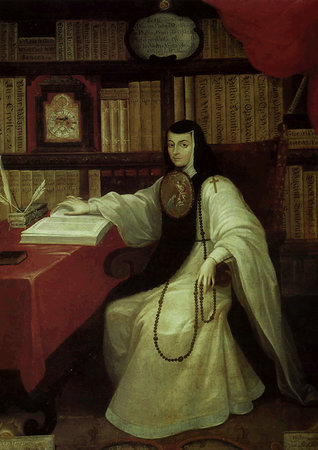
Courtesy of Khan Academy
Form:
- Enlightenment Piece
- Oil on Canvas
Content:
- Portrait of a nun
- Books (symbolizing education)
- Nun = sor
- St. Jerome's translation of Bible
- Painting of Virgin Mary
- Toys with Rosary in Left Hand
- Red Curtains (higher status)
- Eye contact with viewer
Function:
- Conveys the Intellectual and Religious Status
- Feminist
Context:
- Artist: Miguel Cabrera
- 1750 CE
- Location: Mexico City
The Swing, Jean-Honoré Fragonard

Courtesy of SmartHistory
Form:
- Style: Rococo
- Themes: Love, pastels, aristocracy, delicate application, arabesques
- Oil on Canvas
Content:
- Love gardens with sculptures
- Attendant swinging = elite
- French garden
- Cupid whispering
- Expensive shoes on feet
Function:
- Display aristocracy
- Decorate buildings
- Shows decadence and pleasures enjoyed by elite
Context:
- 1767 CE
- Artist: Jean-Honore Fragonard
- Enlightenment
unction:
- Display aristocracy
Context:
- Enlightenment Piece
- Oil on Canvas
- Portrait of a nun
- Books (symbolizing education)
- Nun = sor
- St. Jerome's translation of Bible
- Painting of Virgin Mary
- Toys with Rosary in Left Hand
- Red Curtains (higher status)
- Eye contact with viewer
- Conveys the Intellectual and Religious Status
- Feminist
- Artist: Miguel Cabrera
- 1750 CE
- Location: Mexico City
The Starry Night, Vincent van Gogh
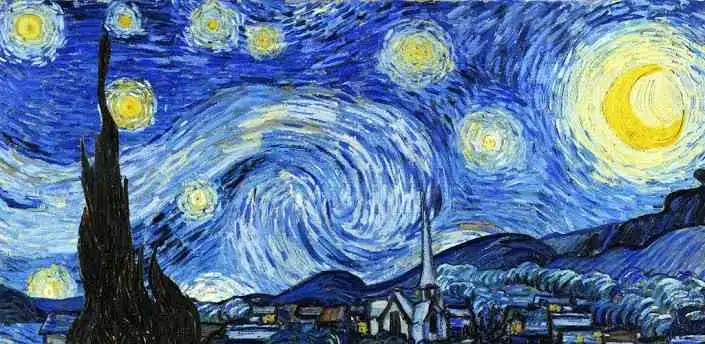
Courtesy of The Artist
Form:
- Oil on Canvas
- Post-Impressionism
- Color Expression = inner reality
Content:
- Night
- Spiritual - pulsing, swirling, spin
- Church
- Cyprus tree = cemetery
Function:
- Night has more color than day
- Everything is "alive"
- Hope
- Request for love
Context:
- 1889
- Artist: Vincent Van Gogh
- St. Remy
- Painted in Hospital
Still Life in Studio, Louis-Jacques-Mandé Daguerre
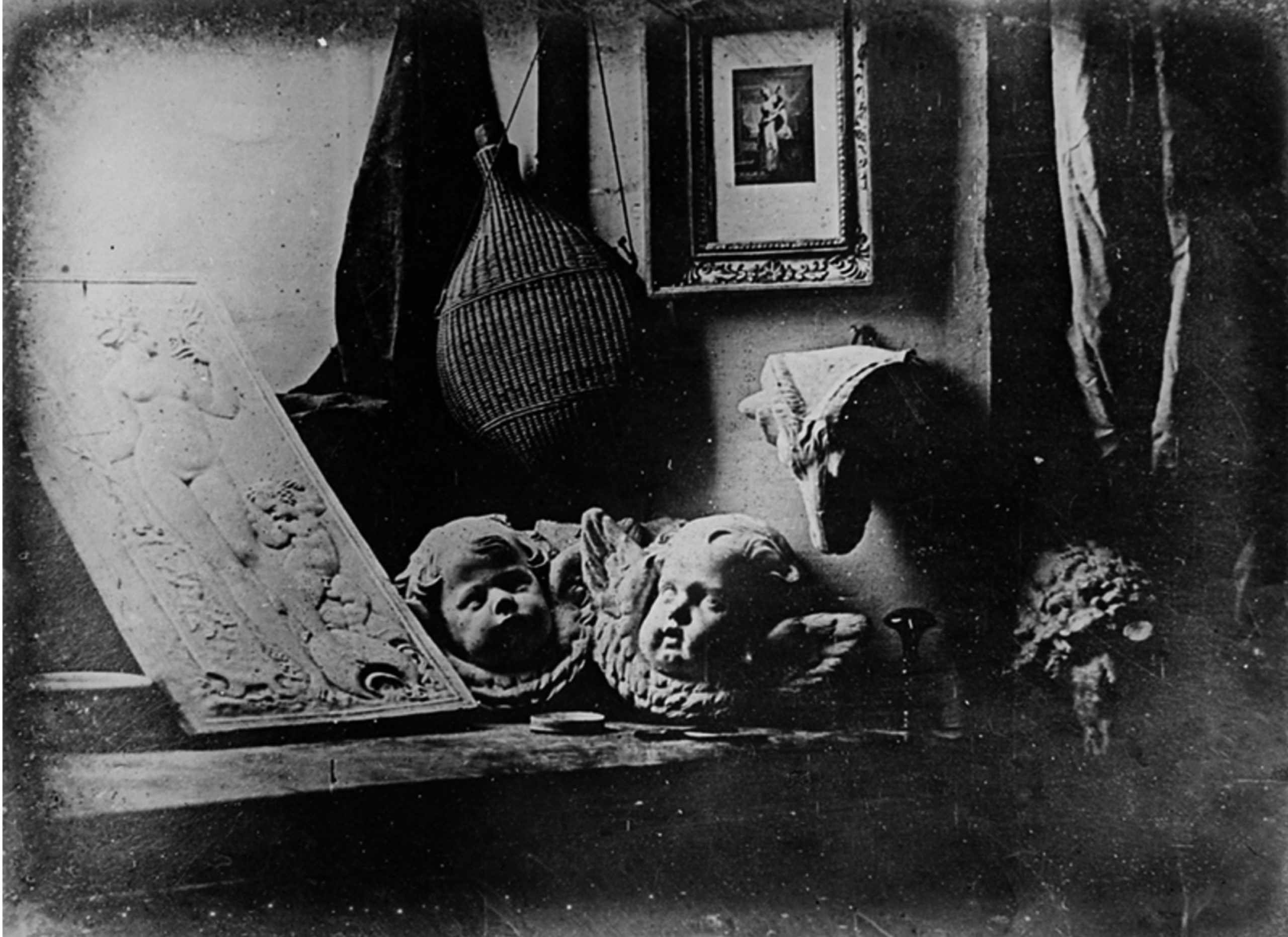
Courtesy of Khan Academy
Form:
- Classical Art
- Precise Detail
- Photography
Function:
- Elevate photography to art
Content:
- Long exposure
- Movement not recorded
- Reversed image
- No flash
- Plaster casts - angels
Context:
- 1837 CE
- Artist: Louis Jacques Maude Daguerre
Les Demoiselles d’Avignon, Pablo Picasso
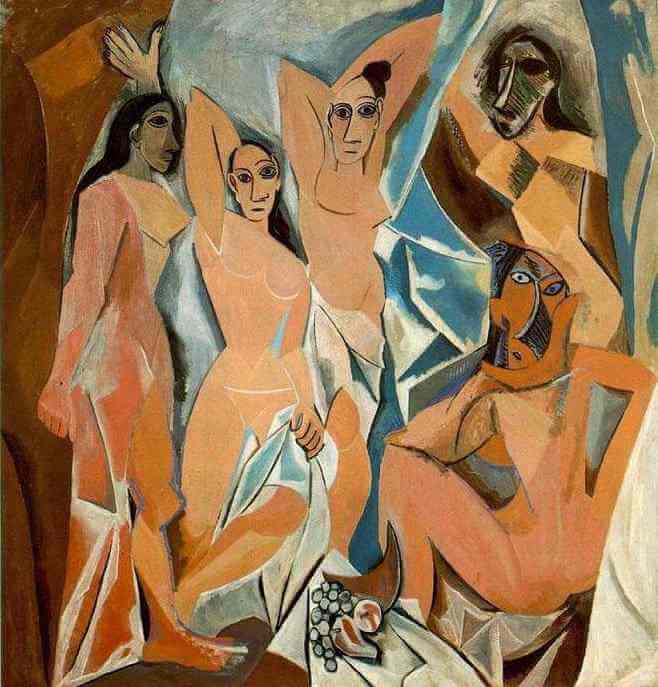
Courtesy of Pablo Picasso
Form:
- Proto-Cubism Style
Content:
- Incorporation of works from various time periods
- Kouros, African masks, Manet's works
- 5 women directly staring at viewer
Function:
- New world of movement in art
Context:
- 1907 CE
- Artist: Pablo Picasso
- Street in Barcelona
The Two Fridas (Las dos Fridas), Frida Kahlo
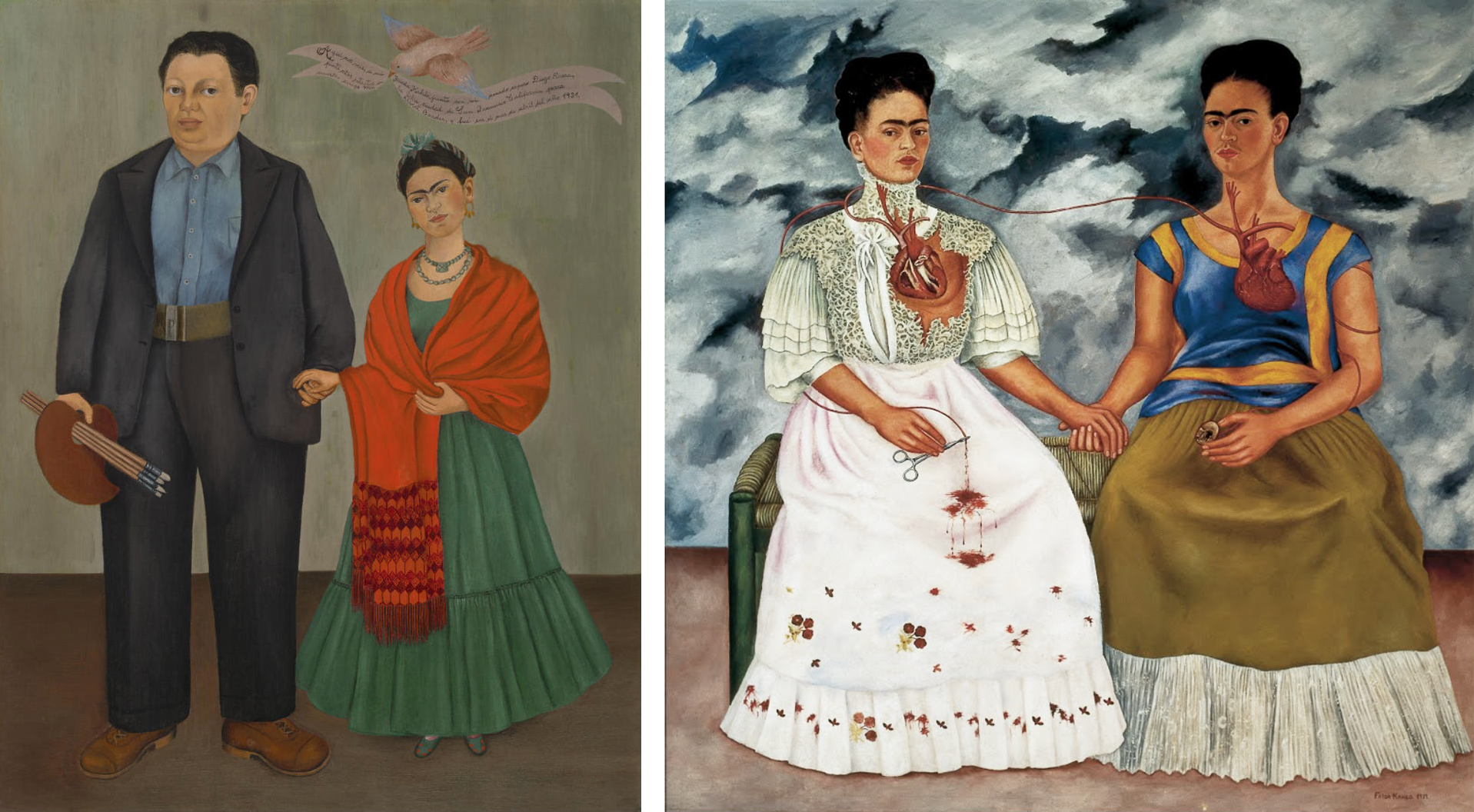
Courtesy of Smart History
Form:
- Surrealist
- Ex-Voto Tradition
- Left = Victorian European
- Right = Mexican
Function:
- Self portrait
- Search for self
- Show two heritages - European father/Mexican mother
- Blood on lap - abortions and miscarriages
Content:
- European Frida on left and Indian/Medican Frida on right
- Right: holds small portrait of ex-husband Diego as child
- Left: holds hemostat - stop bleeding of heart
- Stormy sky- everything going wrong
- Heart twined together by veins that are cut by scissors at one end and lead to portrait of husband
Context:
- In the midst of divorce with Diego Rivera
- 1939
- Frida Kahlo
The Kiss, Gustav Klimt
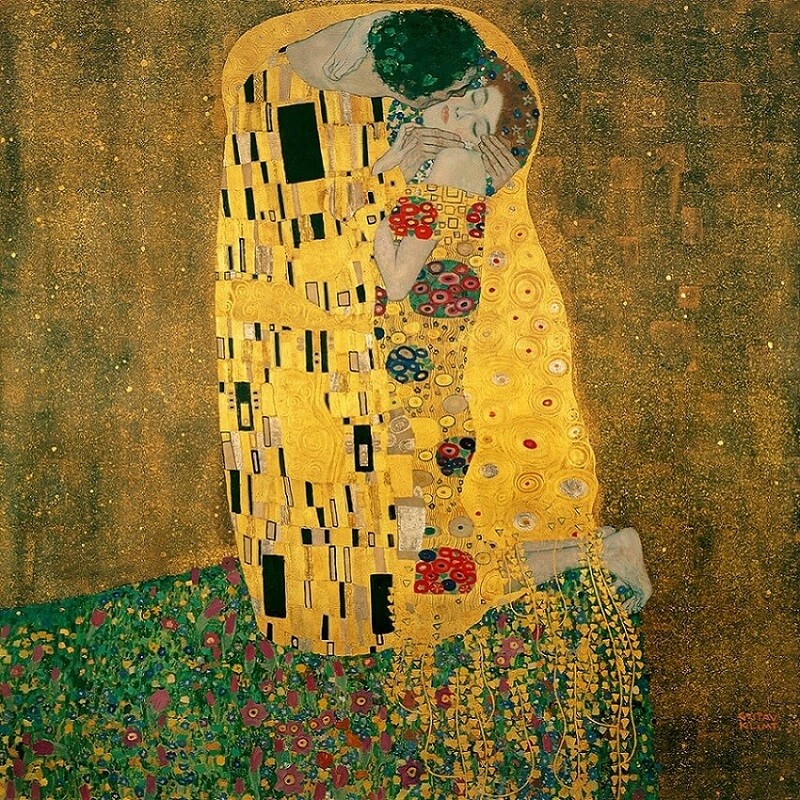
Courtesy of Gustav Klimt
Form:
- Modern Abstract
- Little Detail
- Symmetrical
- Stone
Function:
- Version of The Kiss by Klimt
Content:
- Two bodies becoming one
- Interlocked
- One thing line separating the two
Context:
- Artist: Constantin Brancusi
Dream of a Sunday Afternoon in the Alameda Park, Diego Rivera
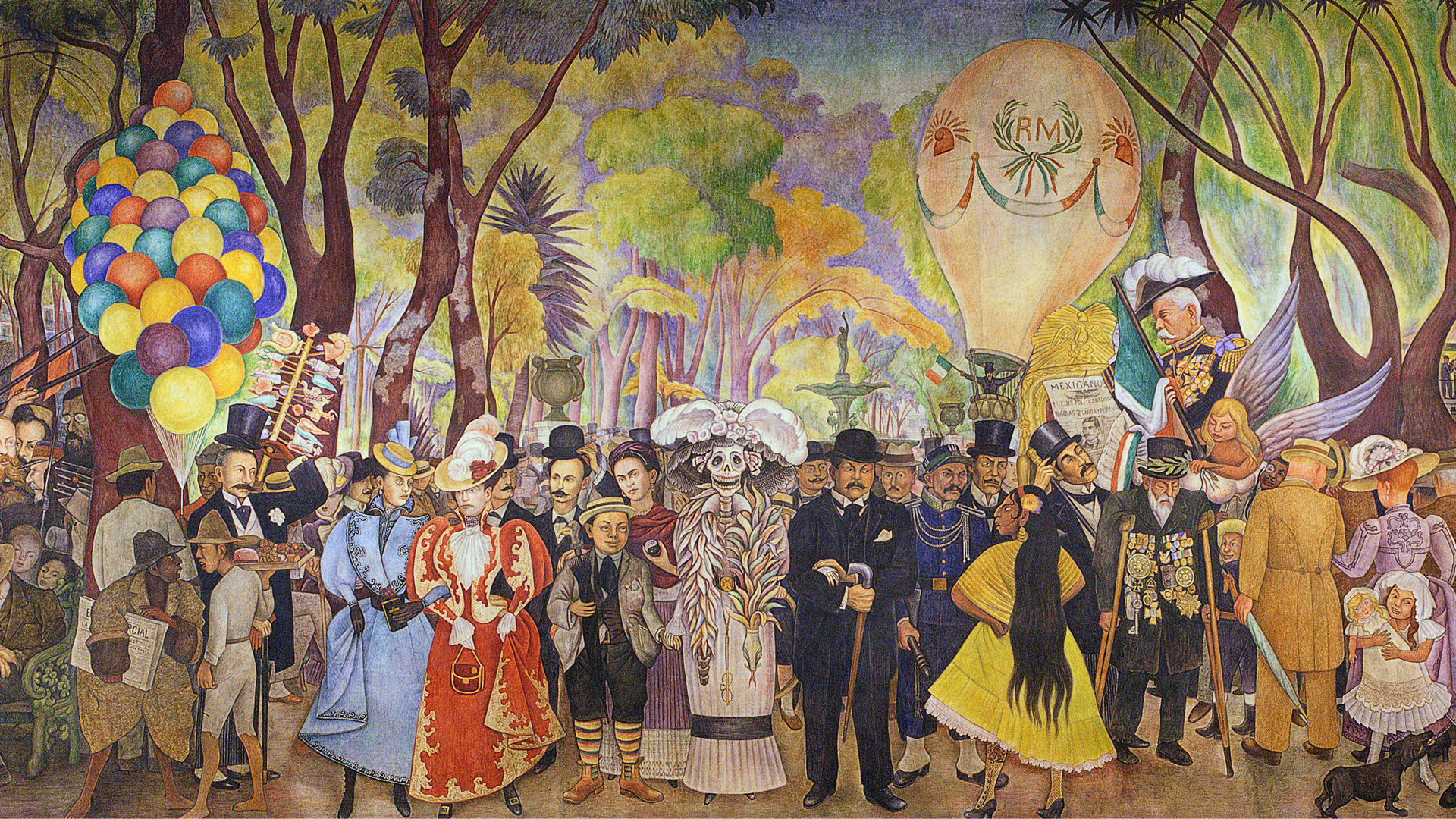
Courtesy of Sotheby's
Form:
- Fresco, 50' long, 13' high
- Inspired by surrealism
- Dream/Nightmare
Function:
- Political propaganda and nationalism
- Historical narrative
- Decoration for a hotel across screet from park
- Show how government was in Mexico
Content:
- Big urban park in Mexico City
- Skeleton in middle - Diego as young boy
- Older portrait of Frida
- 3 periods of Mexican History - Conquest, Porfirio of Diaz dictatorship, revolution of 1910
- Historical government figures/revolution
Context:
- Diego Rivera
- 1947-1948
- Diego's memories of the park
Browse Study Guides By Unit
🗿Unit 1 – Global Prehistoric Art, 30,000-500 BCE
🏛Unit 2 – Ancient Mediterranean Art, 3500-300 BCE
⛪️Unit 3 – Early European and Colonial American Art, 200-1750 CE
⚔️Unit 4 – Later European and American Art, 1750-1980 CE
4.5Unit 4 Required Works
- Introduction
- Portrait of Sor Juana Inés de la Cruz, Miguel Cabrera
- The Swing, Jean-Honoré Fragonard
- The Starry Night, Vincent van Gogh
- Still Life in Studio, Louis-Jacques-Mandé Daguerre
- Les Demoiselles d’Avignon, Pablo Picasso
- The Two Fridas (Las dos Fridas), Frida Kahlo
- The Kiss, Gustav Klimt
- Dream of a Sunday Afternoon in the Alameda Park, Diego Rivera
🌽Unit 5 – Indigenous American Art, 1000 BCE-1980 CE
⚱️Unit 6 – African Art, 1100-1980 CE
🕌Unit 7 – West and Central Asian Art, 500 BCE-1980 CE
🛕Unit 8 – South, East, and Southeast Asian Art, 300 BCE-1980 CE
🐚Unit 9: The Pacific, 700–1980 ce
🏢Unit 10 – Global Contemporary Art, 1980 CE to Present
📚Study Tools

Fiveable
Resources
© 2025 Fiveable Inc. All rights reserved.